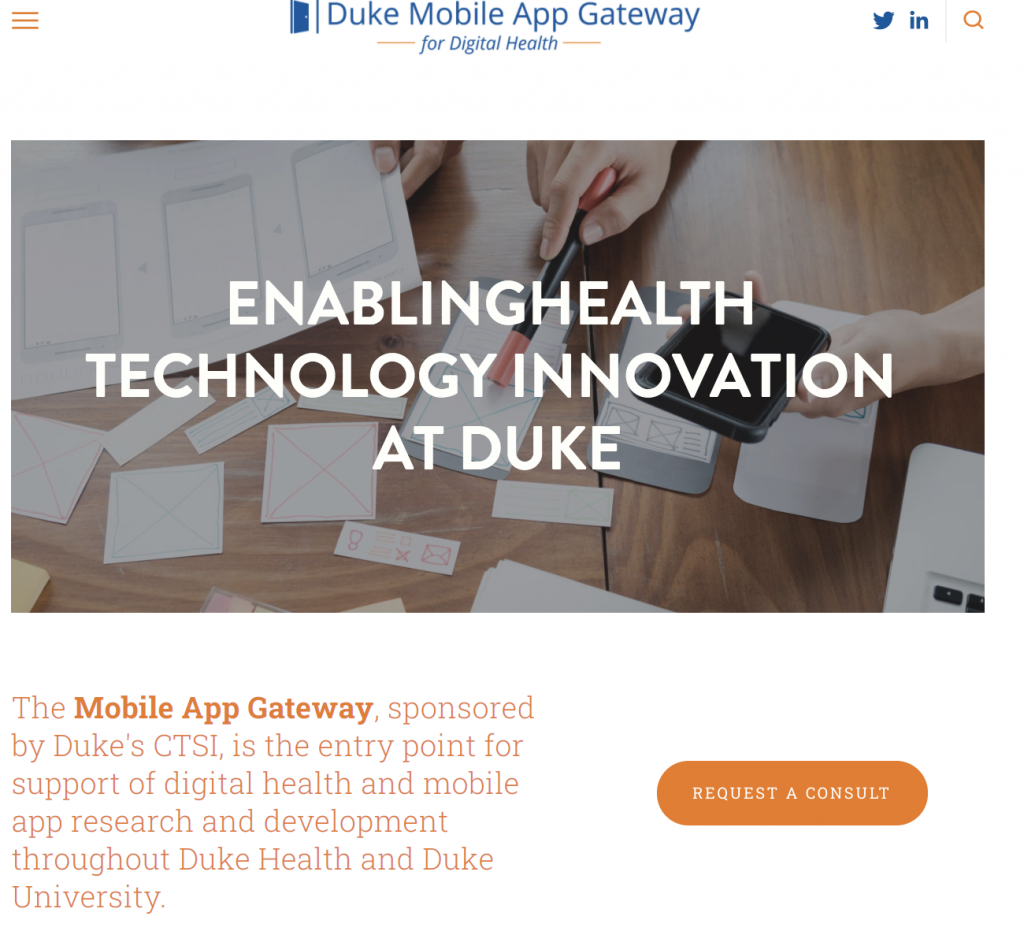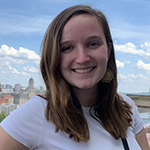The sudden need for contact-tracing technologies to address the Covid-19 pandemic is inspiring some miraculous human ingenuity.
Wednesday, December 16th, Rodney Jenkins, Praudman Jain, and Kartik Nayak discussed Covid-19 contact tracing and the role of new technologies in a forum organized by the Duke Mobile App Gateway team.
Jenkins is the Health Director of Durham County’s Department of Public Health, Jain is CEO and founder of Vibrent Health. And Nayak is an Assistant Professor in Duke’s Computer Science department. The panel was hosted by Leatrice Martin (M.B.A.), Senior Program Coordinator for Duke’s Mobile App Gateway with Duke’s Clinical and Translational Science Institute.
Contact tracing is critical to slowing the spread of Covid, and Jenkins says it’s not going away anytime soon. Jenkins, who only began his position with Durham County Public Health in January 2020, said Durham County’s contact tracing has been… interesting. As the virus approached Durham, “Durham County suffered a severe malware attack that really rendered platforms…useless.”
Eventually, though, the department developed its own method of tracing through trial and error. North Carolina’s Department of Health and Human Services (NC HHS), like many other health departments across the nation in March, was scrambling to adjust. NC HHS was not able to provide support for Durham’s contact tracing until July, when Jenkins identified a serious need for reinforcement due to disproportionate Covid cases amongst Latinx community members. In the meantime, Durham county received help from Duke’s Physician Assistant students and the Blue Cross Blue Shield Foundation. They expanded their team of five to 95 individuals investigating and tracing Durham County’s positive cases.

Jenkins proclaimed contact tracing as “sacred to public health” and a necessary element to “boxing in” Covid-19 – along with widespread testing.
Durham’s tracing tool is conducted through a HIPPA-compliant, secure online portal. Data about individuals is loaded into the system, transmitted to the contact tracing team, and then the team calls close contacts to enable a quick quarantine response. The department had to “make a huge jump very quickly,” said Jenkins. It was this speedy development and integration of new technology that has helped Durham County Public Health better manage the pandemic.
Jain, along with colleague Rachele Peterson, spoke about his company, Vibrent Health. Vibrent, which was recently awarded a five-year grant from the National Institutes of Health’s ‘ll of Us Research Program, is focused on creating and dispersing digital and mobile platforms for public health.
Naturally, this includes a new focus on Covid. With renewed interest in and dependency on contact tracing, Jain says there is a need for different tools to help various stakeholders – from researchers to citizens to government. He believes technology can “become the underlying infrastructure for accelerating science.”
Vibrent identified needs for a national tracing model, including the labor intensity of manual processes, disparate tools, and lack of automation.
Peterson said that as we “are all painfully aware,” the U.S. was not prepared for Covid, resulting in no national tracing solution. She offered that the success of tracing has been mostly due to efforts of “local heroes” like Jenkins. Through their five-year award, Vibrent is developing a next-generation tracing solution that they hope will better target infectious spread, optimize response time, reduce labor burden in managing spread, and increase public trust.
Along with an online digital interface, the company is partnering with Virginia Commonwealth University to work on a statistical modeling system. Peterson likened their idea to the Waze navigation app, which relies on users to add important, real-time data. They hope to offer a visualization tool to identify individuals in close contact with infected or high-risk persons and identify places or routes where users are at higher risk.
Nayak closed the panel by discussing his work on a project complementary to contact tracing, dubbed Poirot. Poirot will use aggregated private contact summary data. Because physical distancing is key to preventing Covid spread, Nayak said it is both important and difficult to measure physical interactions through contact events due to privacy concerns over sensitive data. Using Duke as the case study, Poirot will help decision makers answer questions about which buildings have the most contact events or which populations – faculty versus students – are at higher risk. The technology can also help individuals identify how many daily contacts they have or the safest time of day to visit a particular building.
Nayak said users will only be able to learn about their own contact events, as well as aggregate stats, while decision makers can only access aggregate statistics and have no ability to link data to individuals.
Users will log into a Duke server and then privately upload their data using a technology called blinded tokens. Contact events will be discovered with the help of continuously changing, random identifiers with data summation at intermittent intervals. Data processing will use multiparty computation and differential privacy to ensure information is delinked from individuals. The tool is expected for release in the spring.

Although we are just starting vaccination, the need for nationwide resources “will be ongoing,” Martin said.
We should continue to embrace contact tracing because widespread vaccination will take time, Jenkins said.
Jenkins, Jain, and Nayak are but a few who have stepped up to respond innovatively to Covid. It becomes increasingly apparent that we will continue to need individuals like them, as well as their technological tools, to ease the burden of an overworked and unprepared health system as the pandemic prevails in America.

Post by Cydney Livingston







